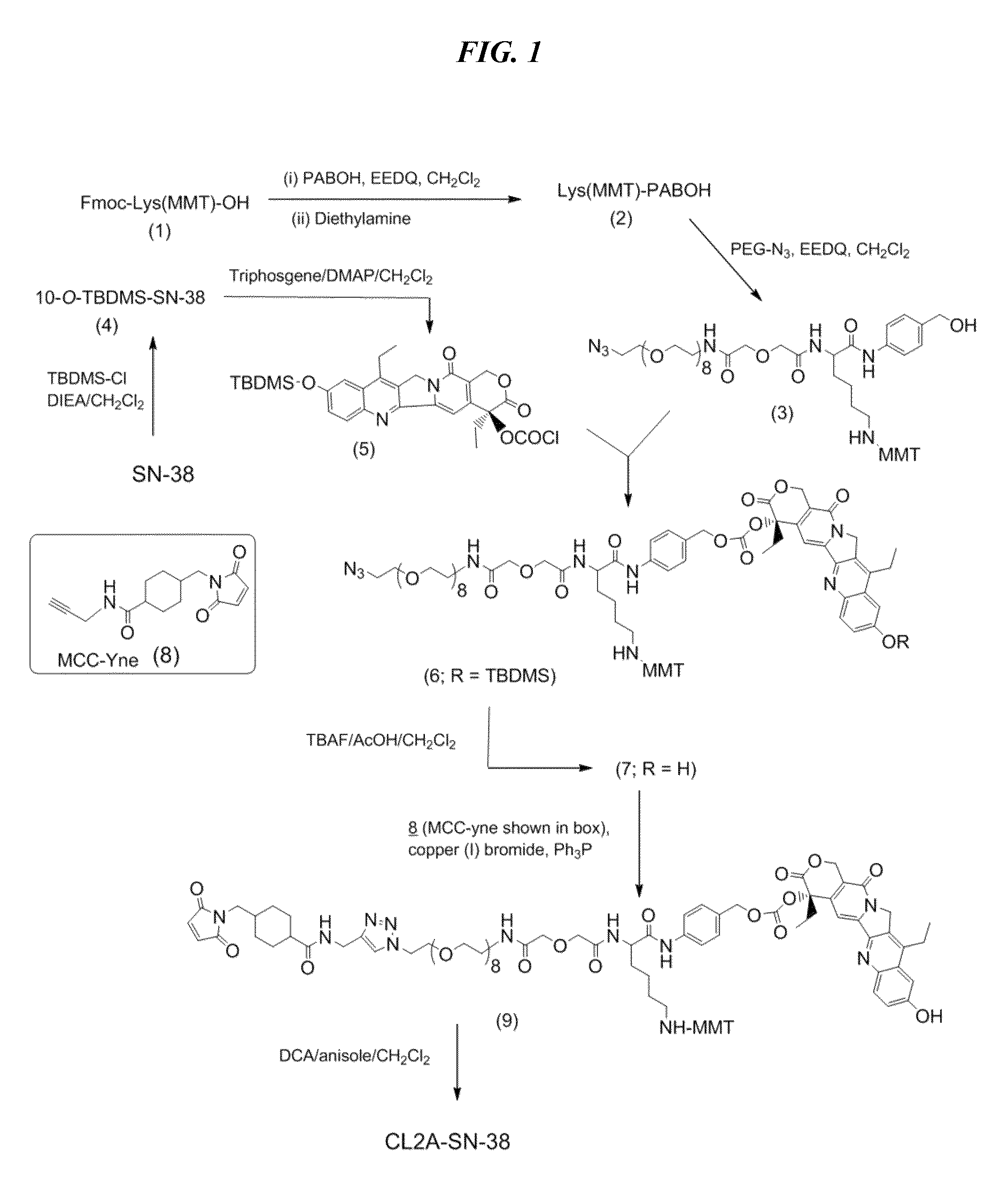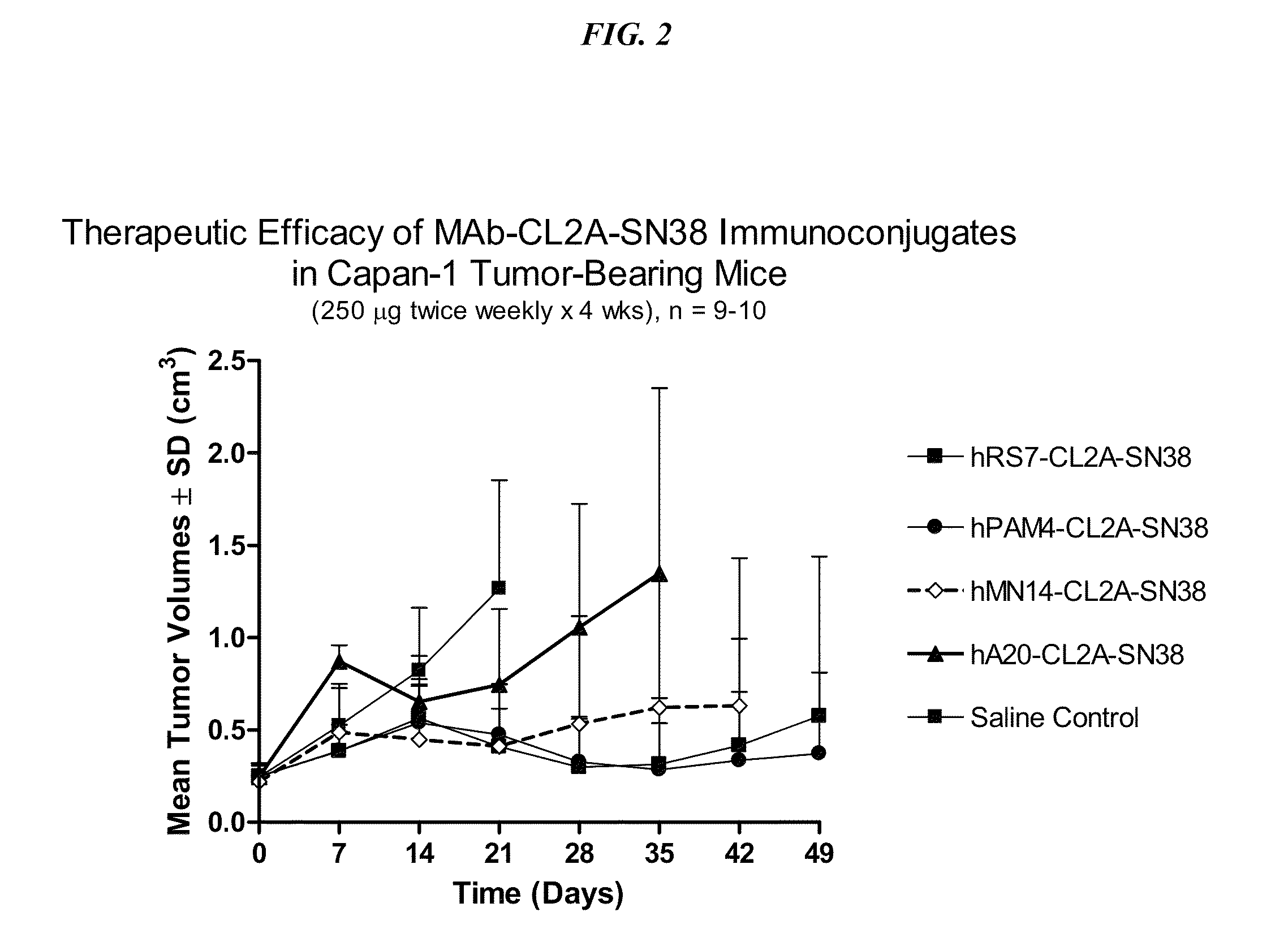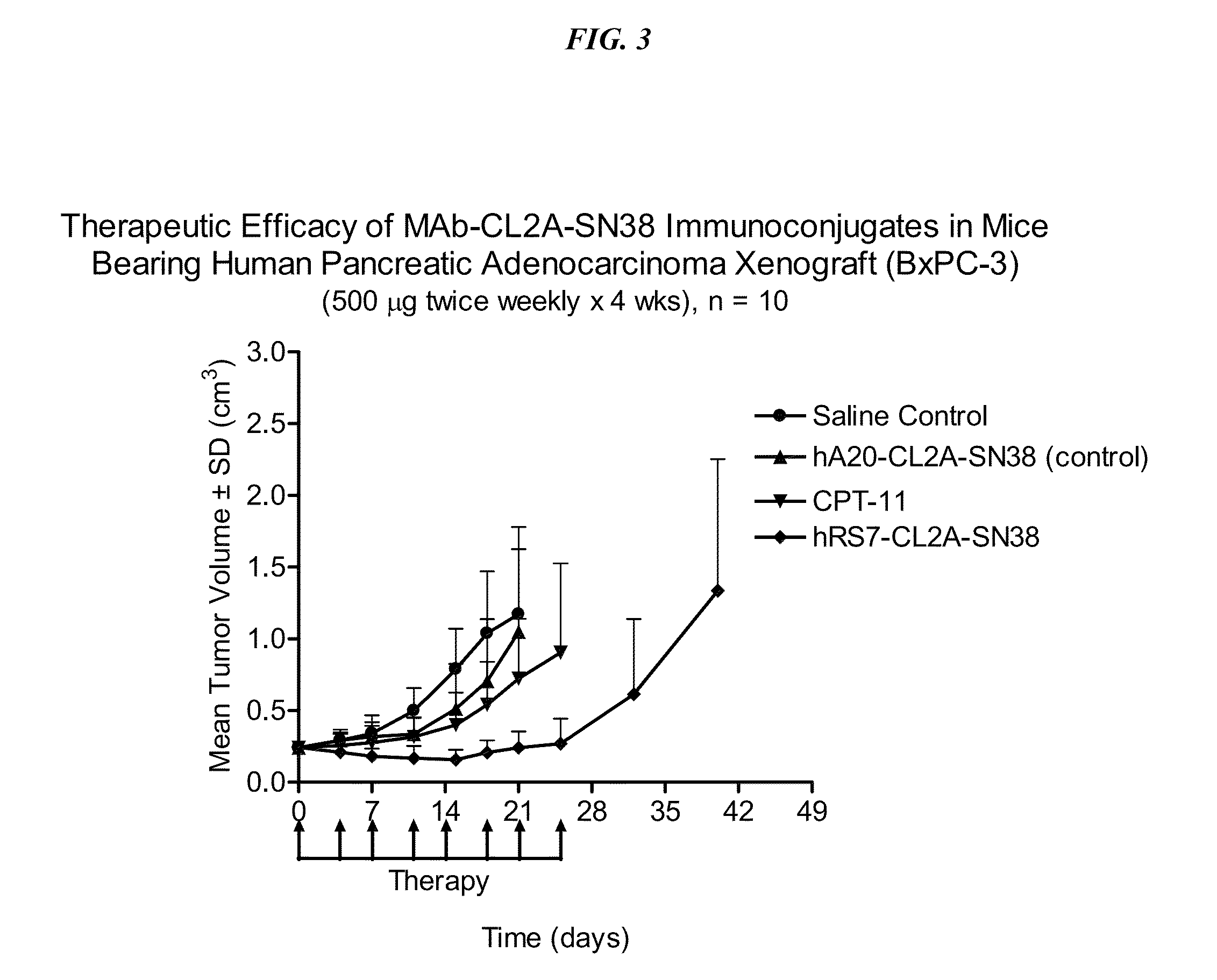Antibody-SN-38 immunoconjugates with a CL2A linker
a technology of immunoconjugates and antibodies, applied in the field of therapeutic immunoconjugates, can solve problems such as reducing immunogenicity, and achieve the effect of improving therapeutic effects and enhancing the bioavailability of drugs
- Summary
- Abstract
- Description
- Claims
- Application Information
AI Technical Summary
Benefits of technology
Problems solved by technology
Method used
Image
Examples
example 1
Preparation of CL2A-SN-38
[0262]A preferred reaction scheme for synthesis of CL2A-SN-38 is shown in FIG. 1, comprising the following steps for improved process for large-scale manufacturing.
[0263]Preparation of O-(2-Azidoethyl)-O′-[(N-diglycolyl-2-aminoethyl)-Lys(MMT)-PABOH]heptaethyleneglycol (intermediate 3, FIG. 1) In a 500-mL single-neck flask, commercially available Fmoc-Lys(MMT)-OH (16 g), p-aminobenzyl alcohol (3.26 g) and EEDQ (6.52 g) were added, followed by anhydrous dichloromethane (80 mL). After stirring overnight, diethylamine (25 mL) was added, and after a further 6 h, the reaction mixture was concentrated to a volume of ˜50 mL. This was diluted with heptane, and the solution was concentrated back to 50 mL. Two additional chases with heptane (50 mL each) provided a biphasic mixture containing gummy material at the bottom. The gummy material was taken up in dichloromethane (24 mL), stirred, and treated to a slow addition of heptane (80 mL). After stirring for 1 h, the sl...
example 2
Conjugation of CL2A-SN-38 to Antibodies
[0267]The anti-CEACAM5 humanized MAb, hMN-14, the anti-CD22 humanized MAb, hLL2, the anti-CD20 humanized MAb, hA20, the anti-EGP-1 humanized MAb, hRS7, and anti-mucin humanized MAb, hPAM4, were used in these studies. Each antibody was mildly reduced with Tris(2-carboxyethyl)phosphine (TCEP) in phosphate buffer at pH in the range of 7-7.4, the pH was adjusted to 6.5, and reacted with ˜10-fold molar excess of CL2A-SN-38 using DMSO at 5-10% v / v as co-solvent, and incubating for 20 min at ambient temperature. Any excess thiol was capped with N-ethylmaleimide used as an aqueous solution at a 10-fold molar excess with respect to antibody.
[0268]The conjugate was purified by tangential flow filtration (TFF), using 20-30 diafiltration volumes of the final formulation buffer, 25 mM MES, pH 6.5. This method avoided cumbersome sequential purification on size-exclusion and hydrophobic columns, thereby enabling hundreds of grams of conjugates to be purified ...
example 3
In Vivo Therapeutic Efficacies in Preclinical Models of Human Pancreatic or Colon Carcinoma
[0270]Immune-compromised athymic female nude mice, bearing subcutaneous human pancreatic or colon tumor xenografts were treated with either specific CL2A-SN-38 conjugate or control conjugate or were left untreated. The therapeutic efficacies of the specific conjugates were observed. FIG. 2 shows a Capan 1 pancreatic tumor model, wherein specific CL2A-SN-38 conjugates of hRS7 (anti-EGP-1), hPAM4 (anti-mucin), and hMN-14 (anti-CEACAM5) antibodies showed better efficacies than control hA20-CL2A-SN-38 conjugate (anti-CD20) and untreated control. Similarly in a BXPC3 model of human pancreatic cancer, the specific hRS7-CL2A-SN-38 showed better therapeutic efficacy than control treatments (FIG. 3). Likewise, in an aggressive LS174T model of human colon carcinoma, treatment with specific hMN-14-CL2A-SN-38 was more efficacious than non-treatment (FIG. 4).
PUM
| Property | Measurement | Unit |
|---|---|---|
| pH | aaaaa | aaaaa |
| structure | aaaaa | aaaaa |
| pH | aaaaa | aaaaa |
Abstract
Description
Claims
Application Information
 Login to View More
Login to View More - R&D
- Intellectual Property
- Life Sciences
- Materials
- Tech Scout
- Unparalleled Data Quality
- Higher Quality Content
- 60% Fewer Hallucinations
Browse by: Latest US Patents, China's latest patents, Technical Efficacy Thesaurus, Application Domain, Technology Topic, Popular Technical Reports.
© 2025 PatSnap. All rights reserved.Legal|Privacy policy|Modern Slavery Act Transparency Statement|Sitemap|About US| Contact US: help@patsnap.com



